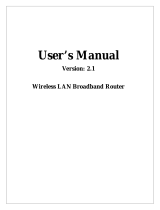
The user manual
This product is a Remote remote control transmitter, the hardware includes a Remote chip (HF1632), a Red LED. eight button
switch
TX227-HF can be used with Beacon socket
1. Connect the beacon socket to 125V power supply
2. After the beacon socket is powered ON, press ON/OFF back and forth within 10 seconds
3. If the beacon socket can be controlled, the pairing is successful
Tx227-HF key function description:
ALL ON: Turn ON ALL sockets
ALL OFF: Turn OFF ALL sockets
ON1: Turn on the first set of sockets
OFF1: Turn off the first set of sockets
ON2: Turn on the second set of sockets
OFF2: Close the second set of sockets
ON3: Turn on the third set of sockets
OFF3: Close the third group of sockets
Reset: Clears pairing
FCC STATEMENT :
This device complies with Part 15 of the FCC Rules. Operation is subject to the following two conditions:
(1) This device may not cause harmful interference, and
(2) This device must accept any interference received, including interference that may cause undesired operation.
Warning: Changes or modifications not expressly approved by the party responsible for compliance could void the user's authority
to operate the equipment.
NOTE: This equipment has been tested and found to comply with the limits for a Class B digital device, pursuant to Part 15 of the
FCC Rules. These limits are designed to provide reasonable protection against harmful interference in a residential installation. This
equipment generates uses and can radiate radio frequency energy and, if not installed and used in accordance with the instructions,
may cause harmful interference to radio communications. However, there is no guarantee that interference will not occur in a
particular installation. If this equipment does cause harmful interference to radio or television reception, which can be determined by
turning the equipment off and on, the user is encouraged to try to correct the interference by one or more of the following measures:
Reorient or relocate the receiving antenna.
Increase the separation between the equipment and receiver.
Connect the equipment into an outlet on a circuit different from that to which the receiver is connected.
Consult the dealer or an experienced radio/TV technician for help.
RF warning statement:
The device has been evaluated to meet general RF exposure requirement. The device can be used in portable exposure condition
without restriction.

